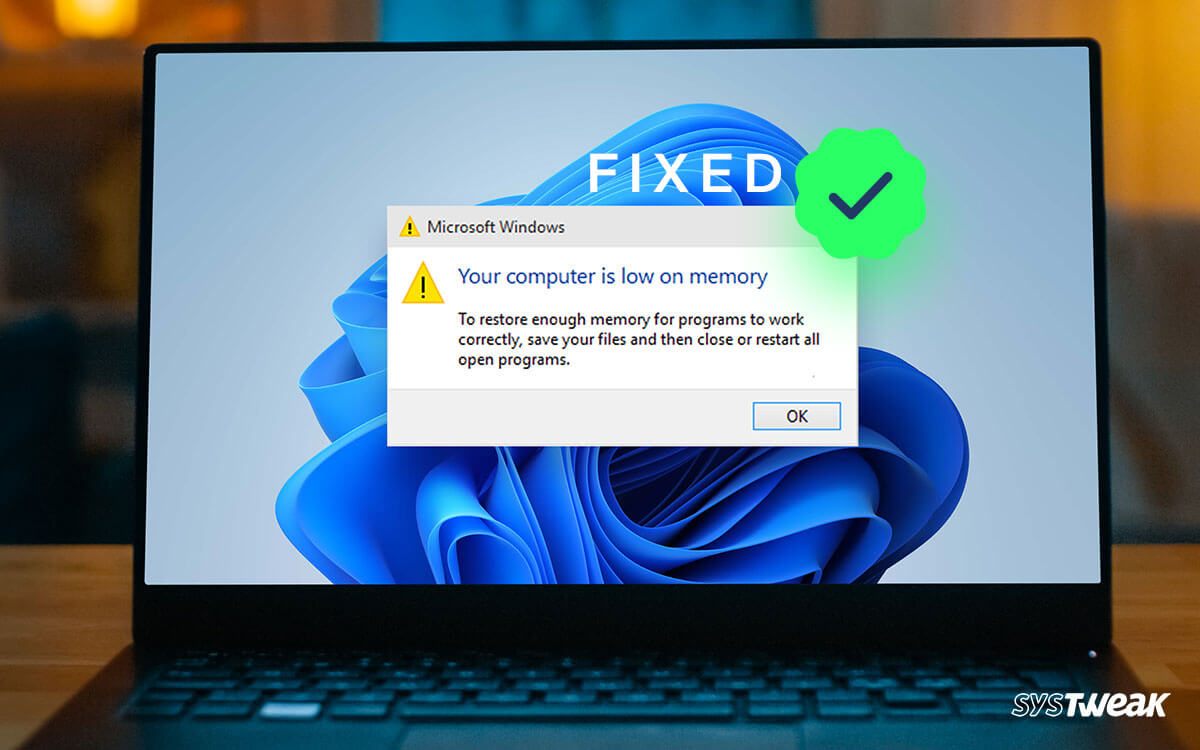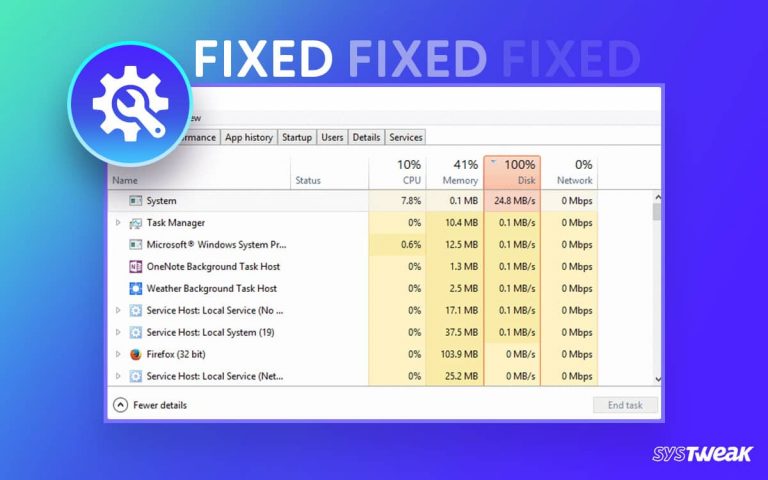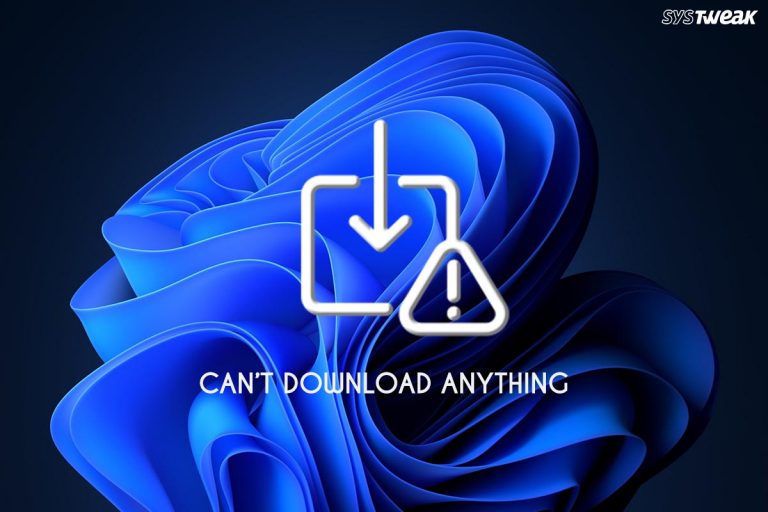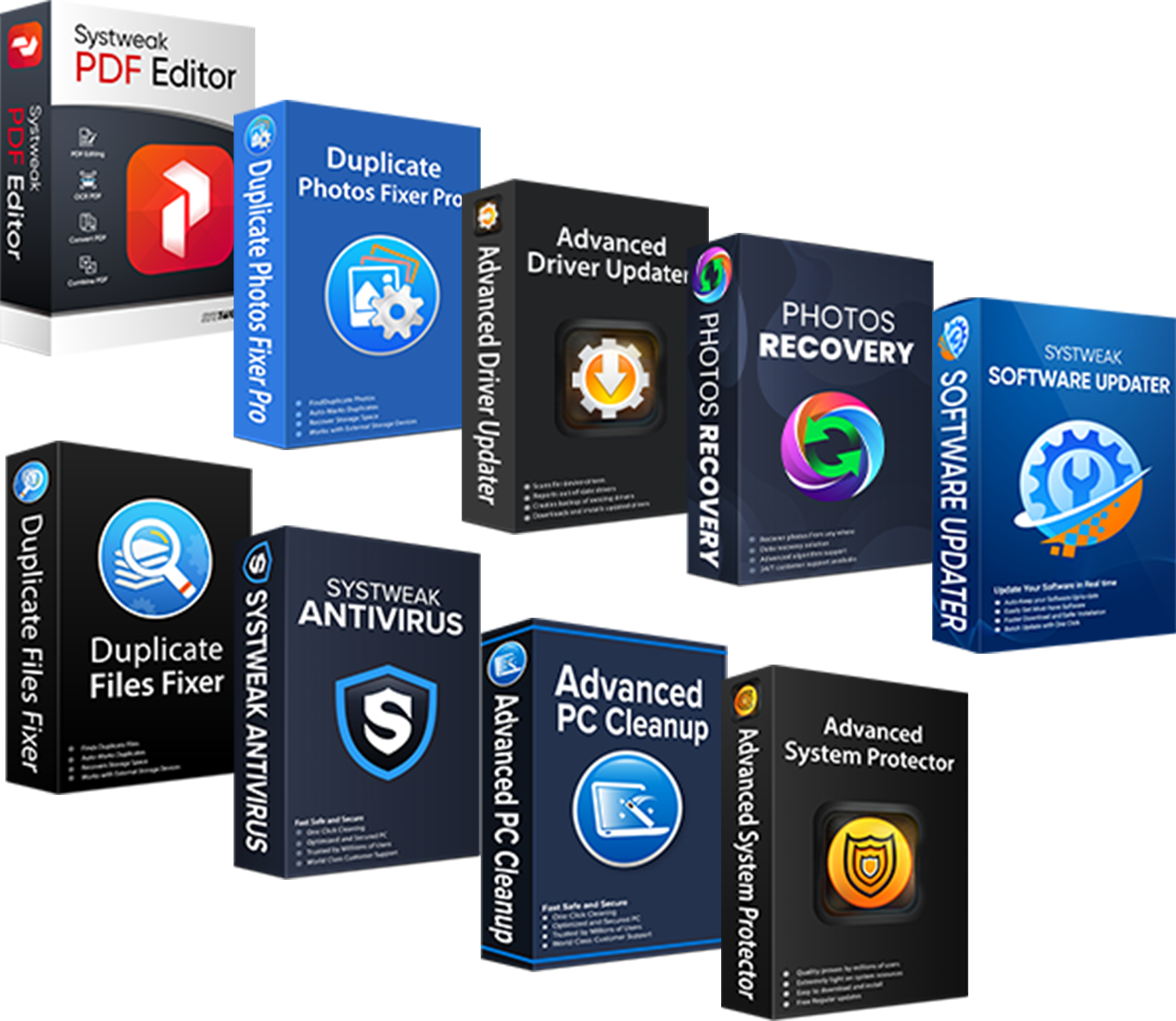Running low on PC memory? Generally, this issue does not bother you until you have been interrupted while doing an important task. If this has ever happened to you, you would surely want to read this article.
50% OFF

BLACK FRIDAY OFFERS
Unlock Black Friday Mega Savings — Systweak Tools FLAT 50% OFF!
PCs recently updated to the latest operating system face this issue more as their systems are relatively older and only optimized for the earlier versions. Hence, computers low on memory are a huge problem, especially for Windows 11/10 users.
Most users have made peace with their PC’s slow speed and low memory status, as they don’t want to invest in a new PC to enjoy better performance. If you also think this way, let me tell you without buying a new PC, you can fix low memory issues.
Your Computer is Low on Memory: Here’s Why!
Many users are concerned about why they are facing computer low on memory errors. Some believe that the upgraded operating system is causing the issue, while others blame it on the application they cannot use. They do not realize that the storage memory and the RAM on any device play a crucial role in maintaining the perfect performance-to-usage ratio.
If your device is struggling with the lower processing speeds and is always low on memory, chances are that it has lower RAM than required, or your storage device is being used at its full capacity.
Low memory can have different meanings on a PC. For example, it can be referred to as low on memory/space if you do not have the required storage space. On the other hand, if your system is out of RAM to accommodate processes, you may face a similar error.
Reasons for Low Memory Error
The error Your computer is low on memory may occur if any of the following conditions are true –
- You have too many background processes running on your system.
- Your storage space is almost filled, and there’s no room for heavy files.
- You are trying to run a heavy application or game that your PC cannot handle.
- You have malware on your computer that is causing your device to slow down.
- A few applications on your computer are turning into memory-hogging processes for many reasons.
- Virtual memory is not allocated properly
- Your RAM/ROM hardware has some issues and requires optimization.
Congratulations if any of these issues ring a bell; half of your problem is resolved. Knowing the core of the issue makes it easier to fix the problem. Fortunately, all of these can be fixed.
Fixes to Work Around Your Computer is Low on Memory Error on Windows 11/10
Fix #1 – Get Rid of Unnecessary Background Processes
The fix works in two phases. Phase one is to close the background processes, and phase two is to remove unnecessary applications from your system.
Sometimes you download a program to perform a particular task but forget to uninstall it. When such programs have permission to run in the background, they often become unnecessary memory hoggers that consume a part of the RAM. Closing them and removing them can help. Here’s how you can do it –
- Press Ctrl+Shift+Esc to open the Task Manager on your Windows PC.

- Here you will find all the running processes.
- Go through all of them to see which processes are useless to you.
- Once you spot any, simply select and click on end task.

- Repeat this process for all the applications you no longer use.
Once you have shut the applications down, it is time to delete those applications from your system. Make sure you remove only those applications that you no longer use. After closing the processes for the same, you will have insights on what applications to remove.
To remove the applications –
- Press Windows + R to open the Run search
- In the run, use the command Control to open the Control Panel.
- Here look for programs and click on Uninstall a program.

- Find the application you want to uninstall.

- Select it and click on Uninstall to initiate the process right away.
With the help of this fix, you can release a significant amount of RAM and storage on your PC, making enough space to resolve your computer’s low memory error.
However, if you are short on time or looking for an easy way out, you can use Advanced System Optimizer, one of the best PC cleaner software you can run on the Windows operating system. With the help of this PC tweaking tool, you can not only uninstall applications and manage startup applications. Still, you can also update drivers, optimize memory, defrag hard disk, and do much more. To get the tool click the button below:
Fix #2 – Expand Virtual Memory Allocation
Virtual memory is the extended memory allocated to your storage device. It helps utilize extra storage space as virtual RAM. Though the allocation is system-defined and automatic, you can increase the size if you have issues with the RAM and give extra storage free on your system.
There is a page file dedicated to memory allocation. If you are wondering how can I increase my computer memory, you can access it and configure it as per your requirement. Here’s how you do it –
- Go to the start menu on your PC and search for Appearance and Performance of Windows.

- Open the available option, and you will see a popup.
- In the pop-up, move to the Advanced tab, and you will see the option for virtual memory.

- Click on Change to open the configuration Window.

- You can easily set values related to how much memory you want to allocate.
Once you have allocated the memory, save the changes and restart your PC. The error might go away after the restart. Make sure you set the page file size accordingly, as if not done correctly; you may face pagefile.sys huge error on your system.
Fix #3 – Run Windows Memory Diagnostic
While fixing an error, it is vital to understand whether the core functionality is working properly or not. If the error lies in the memory itself, you might be unable to fix the low memory error on your PC. Hence running the memory diagnostic can be of great help.
To run the diagnostic, just follow the given steps –
- Press Windows + R to bring up the Run search
- In the run search, use the command mdsched.

- This will bring up the pop-up for Windows Memory Diagnostic.

- It will require you to restart your PC, so make sure all your other files are saved and closed.
Click on the recommended option and let the system diagnose your PC memory. This can help find the memory issues so you can optimize them accordingly.
Fix # 4 – Run a Quick Disk Clean-Up
You should run a quick disk clean-up if you are unsure whether the low-on-memory error appears due to your RAM or storage memory issues.
A disk clean-up helps enhance your PC storage’s performance and allows you to make the most of the available memory. Follow the steps below to initiate the clean-up process.
- Use the Run Search to bring up the disk clean-up utility using the command cleanmgr.

- A calculator for disk clean-up pops up that scans how much space you can free up on your PC.

- Once the calculation is over, you have a list of folders and files that you can remove without hampering your PC’s performance.

- Simply mark the files you want to remove from the system, and the utility will remove them.
This way, your disk clean-up is completed, and all the unnecessary files are removed to free up some storage space.
Fix #5 – Optimize Your PC Memory Usage
Optimization plays a crucial role in enhancing system performance. The more optimized a PC and the memory is, the more efficient it can become. If you know how to optimize the computer and keep it clean, the error that your computer is low on memory might not affect you.
To optimize your PC memory, you can use a dedicated tool known as Advanced System Optimizer. The application is designed in such a way that it has all the utility tools to help optimize memory and maintain disk integrity simultaneously.
Here’s how you can optimize your PC memory using the Advanced System Optimizer –
- Download & install the application on your PC.
- The application’s home screen shows a button that helps run one-click optimization, while on the left panel, you can find options to run individual modules.

- To optimize RAM, click PC Optimizers. You will find a dedicated Memory Optimizer module. Click on it to open it.

- The optimizer shows you an insight into how your current memory is being used with an option to optimize it.

- Click on Optimize now to initiate the process accordingly.
Memory Issues on Windows? NO MORE!
That’s it! These ways can make the memory errors go away. The tool makes even the most complex issues super easy. You no longer have to worry about going to the deep lengths of your system resources to optimize it. Advanced System Optimizer is a super tool that does it for you!
And with that, we have also reached the end of this post. Your PC memory is the key player in the performance of your system. If you are facing the “Your computer is low on memory” error in Windows 11/10, try out the fixes above, and you will surely be able to fix them.
Don’t forget to download Advanced System Optimizer to keep such errors away from your PC.
Next Read:
5 New Creative Things You Can Do With Your Old PC
Top Ways to Enhance RAM Capabilities Without Upgrading It





